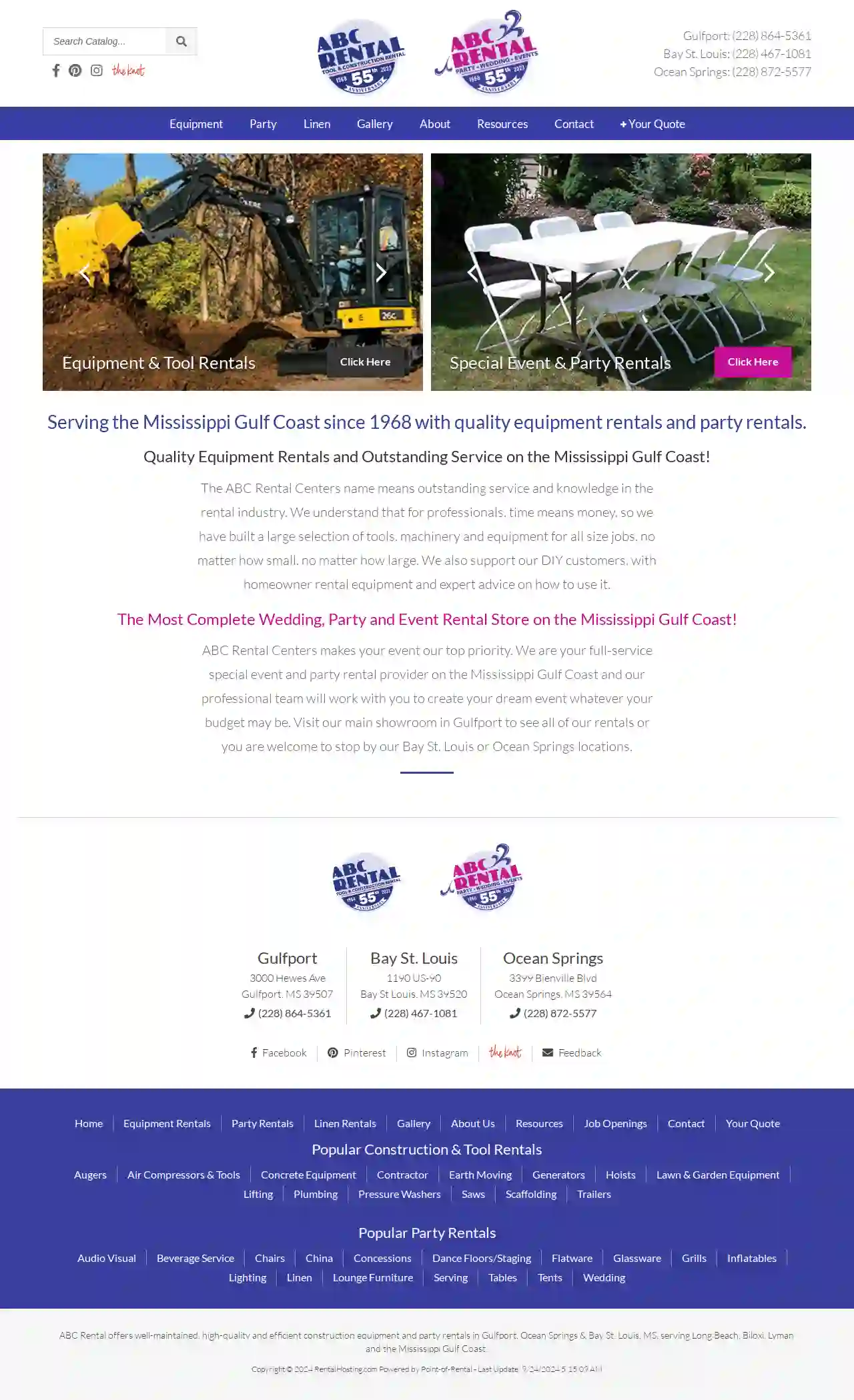Scaffolding Companies Ridgeland
Best Scaffolding Erectors in Ridgeland
Get multiple Scaffolding Contractors quotes for your project today! Compare profiles, reviews, accreditations, portfolio, etc... and choose the best offer.
Service Needed
City or Town

ABC Rental Center
4.4151 reviews3000 Hewes Ave, Gulfport, 39507, USABC Rental offers well-maintained, high-quality and efficient construction equipment and party rentals in Gulfport, Ocean Springs & Bay St. Louis, MS, serving Long Beach, Biloxi, Lyman and the Mississippi Gulf Coast. With a wide range of equipment and party rentals, ABC Rental is dedicated to providing outstanding service and knowledge in the rental industry.
- Services
- Why Us?
- Gallery
Get Quote- Ma
Magnolia Masonry of South Mississippi LLC
4.914 reviewsGulfport, US- Services
- Why Us?
Get Quote - Lo
Lowe's Home Improvement
4.1Gulfport, US- Services
- Why Us?
Get Quote - Cr
Crom Equipment Rentals Inc
Gulfport, US- Services
- Why Us?
Get Quote - Th
The Home Depot
4.2Gulfport, US- Services
- Why Us?
Get Quote
Over 2,353+ Scaffolding Businesses on our platform
Our scaffolding contractors operate in Ridgeland and surrounding areas!
ScaffoldingHQ has curated and vetted the Best Scaffolding Contractors in Ridgeland. Find a reliable pro today.
Frequently Asked Questions About Scaffolding Companies
Find answers to common questions about scaffolding companies and hiring scaffolding contractors in the USA.
- A temporary structure with a larger platform for workers and materials.
- Offers greater stability and working space.
- Suitable for tasks requiring movement and multiple workers.
- Used for higher elevations and more complex projects.
- Used for reaching specific points at height for short durations.
- Less stable than scaffolding, requiring more caution and balance.
- Not suitable for tasks involving heavy materials or extended work periods.
- Steel: The most common material due to its strength, durability, and resistance to corrosion.
- Aluminum: Lighter than steel, often used for smaller projects or where weight is a concern.
- Timber: Used for decking platforms and some traditional scaffolding structures. It's less common now due to its susceptibility to rot and damage.
- Fiberglass: Used in specialized applications where electrical conductivity is a concern.
- Encroaches onto public property (sidewalks, roads): Permits are usually needed from the local council or highway authority.
- Exceeds a certain height: Scaffolding above a specified height often requires a permit.
- Is erected in a conservation area or near a listed building: Special considerations and permits may apply.
What is a scaffolding hoist?
A scaffolding hoist is a mechanical device used to lift materials and equipment vertically up and down scaffolding. It's essential for larger projects where manually carrying heavy items up multiple levels is impractical and unsafe. Scaffolding hoists come in various types and capacities, and their selection depends on the weight and size of the materials being lifted.
What is the difference between a scaffold and a ladder?
While both provide elevation for work at height, they differ significantly:
Scaffolding:
Scaffolding:
What are some common materials used in scaffolding?
Scaffolding is typically constructed from durable materials:
Do I need a permit for scaffolding in the USA?
Whether or not you need a permit for scaffolding in the USA depends on various factors, including the size and location of the scaffolding. In general, permits are often required for scaffolding that:
What is a scaffolding hoist?
A scaffolding hoist is a mechanical device used to lift materials and equipment vertically up and down scaffolding. It's essential for larger projects where manually carrying heavy items up multiple levels is impractical and unsafe. Scaffolding hoists come in various types and capacities, and their selection depends on the weight and size of the materials being lifted.
What is the difference between a scaffold and a ladder?
While both provide elevation for work at height, they differ significantly:
Scaffolding:
Scaffolding:
- A temporary structure with a larger platform for workers and materials.
- Offers greater stability and working space.
- Suitable for tasks requiring movement and multiple workers.
- Used for higher elevations and more complex projects.
- Used for reaching specific points at height for short durations.
- Less stable than scaffolding, requiring more caution and balance.
- Not suitable for tasks involving heavy materials or extended work periods.
What are some common materials used in scaffolding?
Scaffolding is typically constructed from durable materials:
- Steel: The most common material due to its strength, durability, and resistance to corrosion.
- Aluminum: Lighter than steel, often used for smaller projects or where weight is a concern.
- Timber: Used for decking platforms and some traditional scaffolding structures. It's less common now due to its susceptibility to rot and damage.
- Fiberglass: Used in specialized applications where electrical conductivity is a concern.
Do I need a permit for scaffolding in the USA?
Whether or not you need a permit for scaffolding in the USA depends on various factors, including the size and location of the scaffolding. In general, permits are often required for scaffolding that:
- Encroaches onto public property (sidewalks, roads): Permits are usually needed from the local council or highway authority.
- Exceeds a certain height: Scaffolding above a specified height often requires a permit.
- Is erected in a conservation area or near a listed building: Special considerations and permits may apply.